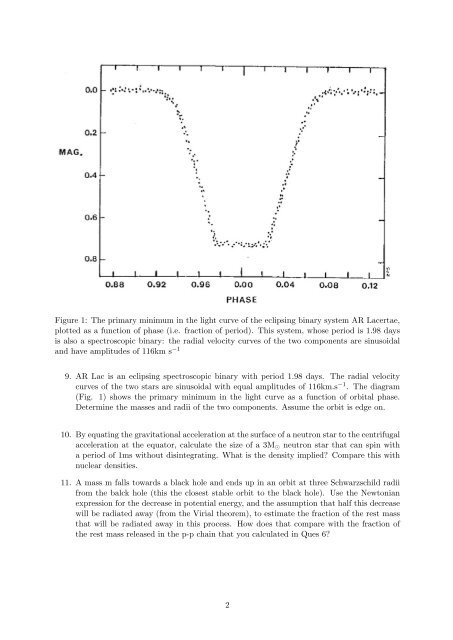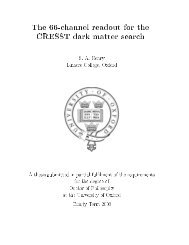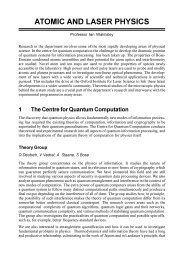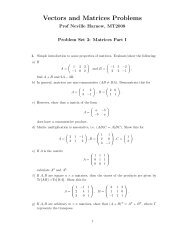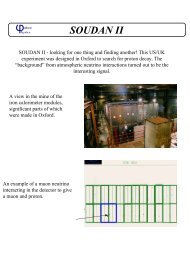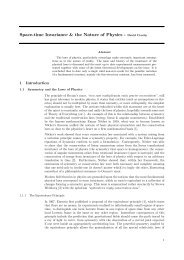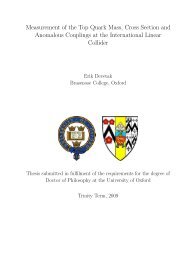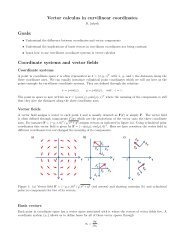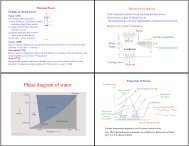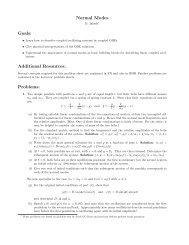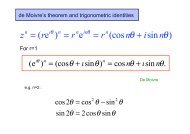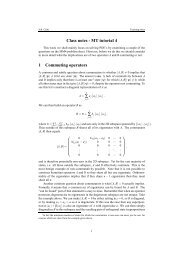S2: Astrophysics: From Planets to The Cosmos Trinity term 2012
S2: Astrophysics: From Planets to The Cosmos Trinity term 2012
S2: Astrophysics: From Planets to The Cosmos Trinity term 2012
Create successful ePaper yourself
Turn your PDF publications into a flip-book with our unique Google optimized e-Paper software.
Figure 1: <strong>The</strong> primary minimum in the light curve of the eclipsing binary system AR Lacertae,<br />
plotted as a function of phase (i.e. fraction of period). This system, whose period is 1.98 days<br />
is also a spectroscopic binary: the radial velocity curves of the two components are sinusoidal<br />
and have amplitudes of 116km s −1<br />
9. AR Lac is an eclipsing spectroscopic binary with period 1.98 days. <strong>The</strong> radial velocity<br />
curves of the two stars are sinusoidal with equal amplitudes of 116km.s −1 . <strong>The</strong> diagram<br />
(Fig. 1) shows the primary minimum in the light curve as a function of orbital phase.<br />
De<strong>term</strong>ine the masses and radii of the two components. Assume the orbit is edge on.<br />
10. By equating the gravitational acceleration at the surface of a neutron star <strong>to</strong> the centrifugal<br />
acceleration at the equa<strong>to</strong>r, calculate the size of a 3M ⊙ neutron star that can spin with<br />
a period of 1ms without disintegrating. What is the density implied? Compare this with<br />
nuclear densities.<br />
11. A mass m falls <strong>to</strong>wards a black hole and ends up in an orbit at three Schwarzschild radii<br />
from the balck hole (this the closest stable orbit <strong>to</strong> the black hole). Use the New<strong>to</strong>nian<br />
expression for the decrease in potential energy, and the assumption that half this decrease<br />
will be radiated away (from the Virial theorem), <strong>to</strong> estimate the fraction of the rest mass<br />
that will be radiated away in this process. How does that compare with the fraction of<br />
the rest mass released in the p-p chain that you calculated in Ques 6?<br />
2


